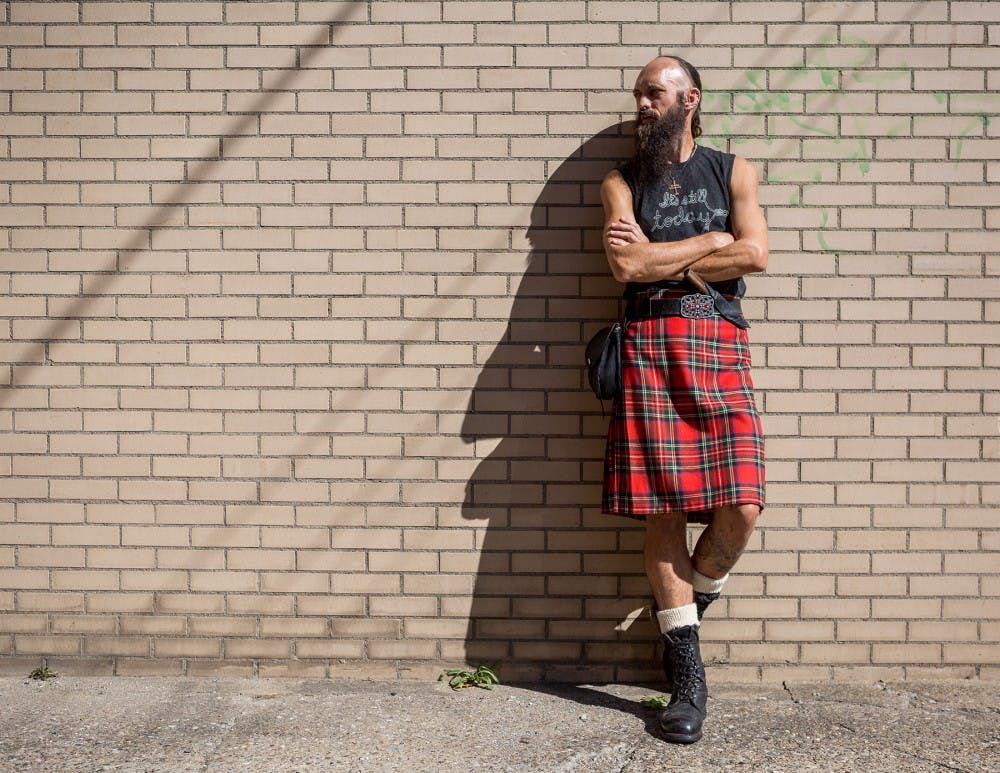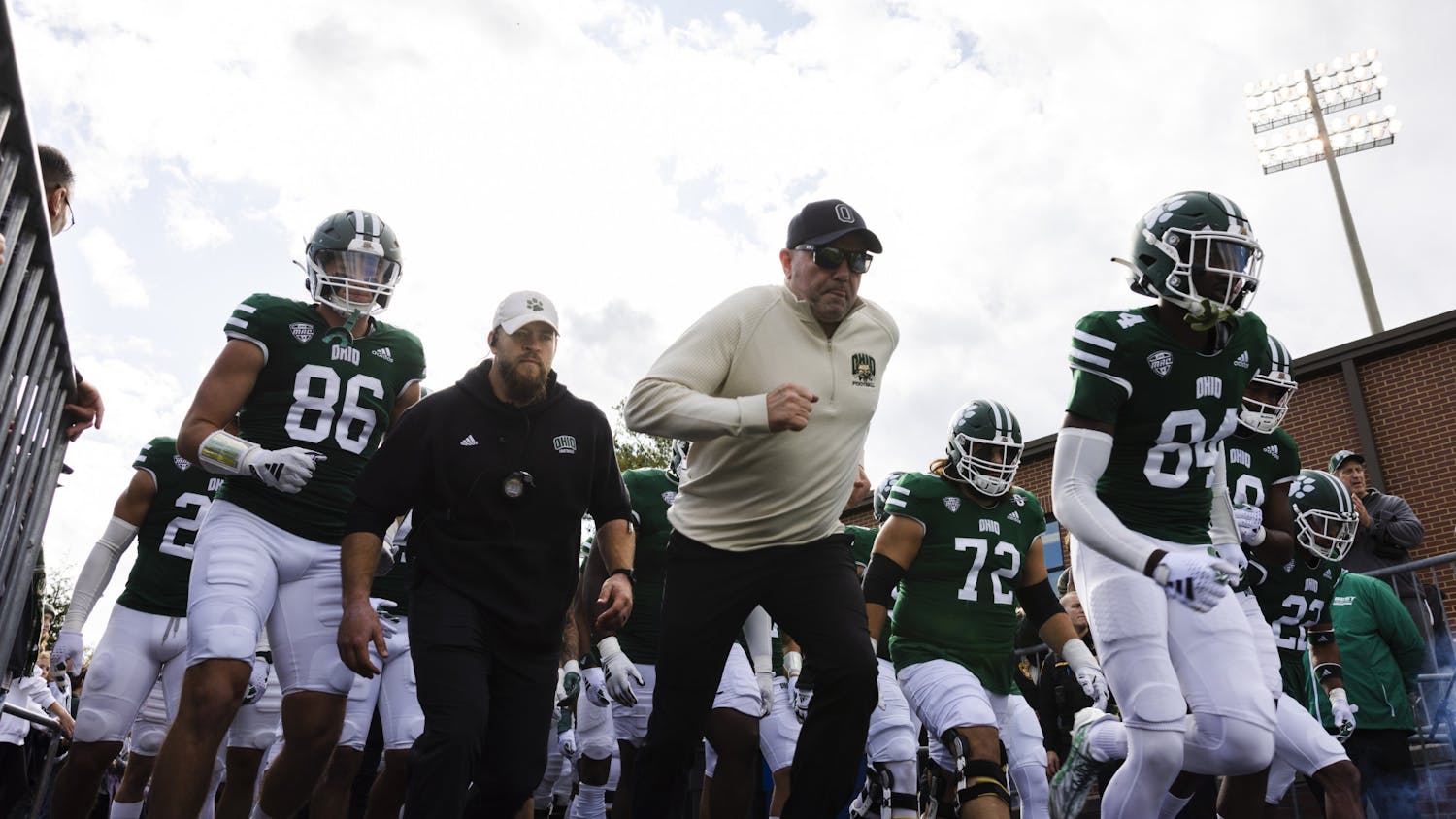Harvey Ballard first became interested in kilts about 15 years ago, but he didn’t actually wear one in public until 10 years later when he researched his genealogy and found he had Scottish and Irish ancestors.
“I just decided, 'screw it — I’m more than 50 years old, who gives a crap?'” Ballard, an associate professor and internship coordinator of the environmental and plant biology program, said. “I discovered there are a lot of guys around the country and around the world wearing kilts even though they originated in Scotland primarily.”
Although kilts are centuries old and not always considered main-stream clothing, some students and local residents choose to respect that tradition and wear their kilts around Athens.
Ballard found his first kilt, which he described as “theoretically cheap,” for around $130 on Scotweb — an online resource for Scottish and Celtic merchandise. He added that most kilts are more expensive than what he paid for his first one.
“I wore it (and) for the first hour I was kind of terrified, and then I looked around, and no one was paying any attention,” Ballard said.
Ken Jackson, a barista at Donkey Coffee and Espresso, started wearing kilts about 3 years ago when he looked into his background and discovered his Irish heritage. Jackson wears a kilt at least five days a week and owns 11 of them.
“I just found it to be something that was neat. … It didn’t fit the social norm,” Jackson said.
Not all people who wear kilts decide to do so to honor tradition, however.
Dominic Detwiler, a freshman studying music education, said he got his first and only kilt a couple years ago and he “just love(s) it.” Despite his Celtic heritage, Detwiler said he doesn’t wear his kilt for the traditional aspect.
“It’s more just because it’s super cool and it’s comfortable,” Detwiler said. “I think a lot of people do wear it for traditional reason and … I think it gives people a great opportunity to connect to that aspect of the tradition.”
Ballard said once he became interested in wearing his first kilt somewhat regularly, he realized he wouldn’t be able to buy another one considering the expense. He looked at the construction of his initial kilt and figured he could make one himself.
“I hadn’t sewn anything since home ec. in 10th grade (in) high school, but I bet I could learn how to do that,” Ballard said.
He read the book The Art of Kilt Making which provided step-by-step instructions for how to make a kilt by hand. Ballard attempted to do that once but then decided he would “never do that again” and switched to a quilt-making sewing machine. He set up wholesale accounts with tartan mills in Scotland so he could receive the expensive, finely machined wool at a discounted price.
A kilt is made up of fabric, as well as a kilt pin that holds the bottom corner of the kilt down and a leather front satchel called a “sporran,” Ballard said. Buckles and straps also help with keeping the kilt closed.
“I’ve worn my kilt in 35 mile per hour wind and haven’t had a problem,” Ballard said.
Jackson bought a few sporrans online and even made his own out of elk. He added that from his research, he has found that sporrans were traditionally worn on the side, but that became inconvenient for Celtic musicians who carried around bagpipes. The modern style is to wear them in the front.
It takes Ballard a few months to make one kilt because he is busy with his day job as a professor.
“I don’t advertise (my kilt business) because if I did, I’d never be able to keep up with it,” Ballard said.
Jackson said he has never bought a kilt from Ballard, but the two have talked multiple times about planning a time for Jackson to “apprentice” under Ballard while he actually creates a kilt.
Kilts have become more mainstream, Jackson said, partially because entertainment figures, such as musician Axl Rose, started wearing them as fashionable garments.
“It’s definitely becoming more popular,” Jackson said. “But not enough where you’re finding (kilts) in the malls.”
Jackson said in the modern era, there are certain occasions in which wearing a kilt is seen as inappropriate.
“It takes a little bit of courage to wear one, but they’re really comfortable,” Ballard said. “One of the things I like about them is that in our society where most of our clothing is largely unisexual now, this is still traditionally a male-only garment, which is kind of unusual.”
However, women can purchase kilts that are usually made in a reverse direction or made as kilted skirts, Ballard said.
“If people can get away from the stereotype that it’s a dress or a skirt, then you’ll find more and more people (wearing) them,” Jackson said.






